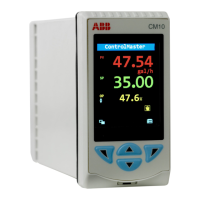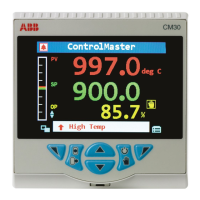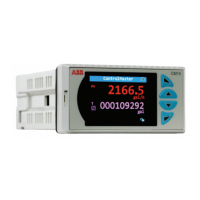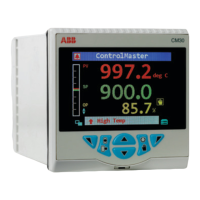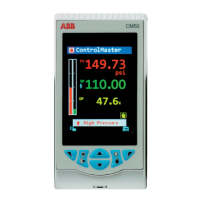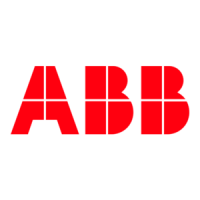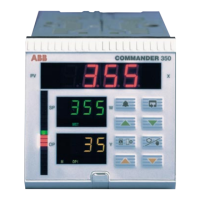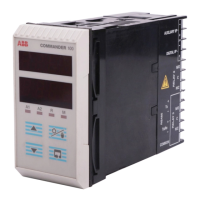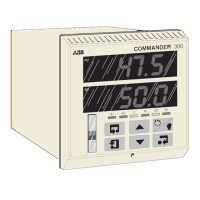Do you have a question about the ABB ControlIT 53MC5000 and is the answer not in the manual?
| Brand | ABB |
|---|---|
| Model | ControlIT 53MC5000 |
| Category | Controller |
| Language | English |
Provides an overview of the ABB Automation 53MC5000 Process Control Station's capabilities, features, and architecture.
Lists the electrical, environmental, and physical specifications of the 53MC5000 Process Control Station.
Provides instructions and considerations for mounting the controller in a panel, including single and multiple unit setups.
Provides an overview of power connections and detailed procedures for various power sources (+24V DC, AC).
Explains signal connections to the standard rear terminal board, including analog inputs and outputs.
Explains signal connections for various ITBs like SCADA Adapter, Analog ITB, and Cord Set ITB.
Details the RS-232 mini-DIN configuration port connector and its use with Hand Held Configurer or PC.
Explains how Function Indexes (FIXs) determine the controller's functionality and lists available control strategies.
Describes how to use Engineer Mode to view or change controller database parameters and the overlay system.
Shows the instrument name and tagnames of modules that can generate alarms; blinking tagname indicates an alarm.
Displays loop control information with bar graphs and digital readouts, type selected by Control Display Mode (CDM).
Defines the six data point types (L, B, C, H, A, F) representing data formats like integers, text strings, and floating points.
Explains how to modify datapoints to reflect changes in factory standard configuration or re-configuration.
Describes CS1 operation as a standard PID controller, its typical use, and how output is calculated and applied.
Lists values that can be entered into designated soft-wire list datapoints to alter CS1 functionality.
Explains the controller's role as a signal selector and backup unit to a remote computer, operating as a Single Loop PID controller.
Describes the Ratio Controller's function in maintaining a proportion between two variables, used for process applications.
Describes the Automatic/Manual Station's operation as a selector, manual loader, and ratio station for throughput control.
Describes CS5 operation as a combination auto/manual selector, manual loader, and ratio station for throughput control.
Describes CS20 operation as two independent PID controllers for primary and secondary control loops.
Explains CS21 operation using two PID controllers for primary and secondary loops in a cascade configuration.
Describes CS22 operation with two PID controllers for primary and limiting variables controlling a single final element.
Explains CS40 operation using four PID controllers for two cascade pairs, enabling bumpless transfer.
Describes CS41 operation using four identical PID controllers, detailing input/output signals and hardware capabilities.
Explains Proportional Band (% P.B.) and its relation to controller gain and output signal magnitude.
Provides summary information on tuning parameters and outlines three methods: Trial and Error, Proportional Cycle, and Step Response.
Details how to initiate the EASY-TUNE sequence by setting specific datapoints in the System Module and Controller Module.
Explains how to interpret the EASY-TUNE algorithm results using numeric codes displayed in datapoint B387.
Outlines the approach to servicing the instrument, emphasizing checking external devices first and avoiding IC-level analysis.
Provides procedures for replacing parts, referencing tables and figures for specific components like displays and PCBs.
Describes the two digital communication channels: RS-232 configuration port and RS-422/485 Datalink network interface.
Details how to initialize the controller for binary communications by configuring Datalink port parameters.
Explains how to determine controller memory addresses for data bits and bytes based on data types.
Explains how remote keypad support is activated and wired to the 6DI/4DO board, noting front panel precedence.
Defines the six datapoint types (L, B, C, H, A, F) representing data formats like integers, text strings, and floating points.
Lists equipment approved by Factory Mutual for Nonincendive use in Class I, Division 2 Hazardous Locations.
Lists optional accessories suitable for use in Division 2 locations, including I/O modules and adapters.
